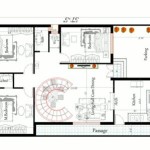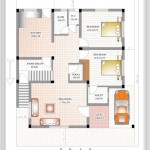The Ultimate House Planning Tool: Essential Features to Look For
Building a house can be an overwhelming task, but having the right tools can make the process much smoother. A comprehensive house planning tool can streamline the design, planning, and construction phases, saving you time, money, and stress.
When choosing a house planning tool, it's essential to consider several key features that will enhance your planning experience:
1. Floor Plan Creation and Customization
The ability to create and customize floor plans is a cornerstone of any house planning tool. Look for a tool that allows you to drag and drop rooms, adjust dimensions, and experiment with different layouts. It should also support advanced features like room labeling, furniture placement, and 3D visualization.
2. Material Selection and Cost Estimation
Choose a tool that integrates with material databases to provide accurate cost estimates. This feature can help you make informed decisions about materials and stay within your budget. The tool should also allow you to explore different finish options and compare costs to find the best value for your money.
3. Landscaping and Outdoor Design
Don't neglect the importance of landscaping and outdoor design. A tool that includes features for creating outdoor spaces, such as patios, decks, and gardens, can help you visualize the full scope of your property. It should allow you to experiment with different plant layouts and hardscaping materials.
4. Project Collaboration and Sharing
If you're working with a team or need to share your plans with others, collaboration and sharing capabilities are crucial. Choose a tool that allows multiple users to access and edit the plan simultaneously, add comments, and generate shareable links.
5. 3D Rendering and Virtual Tours
3D rendering and virtual tours can bring your house plans to life. Look for a tool that provides high-quality 3D models and allows you to walk through your house virtually. This feature helps you visualize the space, identify potential issues, and make informed design decisions.
6. Code Compliance and Building Regulations
Ensure your house planning tool meets local building codes and regulations. The tool should provide guidance on setbacks, ceiling heights, and other requirements. This can prevent costly delays and ensure your project is compliant with local laws.
7. User Interface and Learning Curve
The user interface of a house planning tool should be intuitive and easy to navigate. Look for a tool that provides clear instructions, tutorials, and support resources to help you get started quickly. A well-designed interface can significantly reduce your learning curve and streamline your planning process.
By selecting a house planning tool with these essential features, you can create detailed and accurate plans, optimize your budget, visualize your dream home, and collaborate efficiently throughout the project.

Home Design Your House

Home Design Your House

Sweet Home 3d Draw Floor Plans And Arrange Furniture Freely

13 Best Free Home Design And Tools In 2024

Create Floor Plans And Home Designs

Create Floor Plans And Home Designs

Home Builder

Floor Plan Creator Planner 5d

House Design

Free Home Design Reviews Floor Plans Programs Plan








